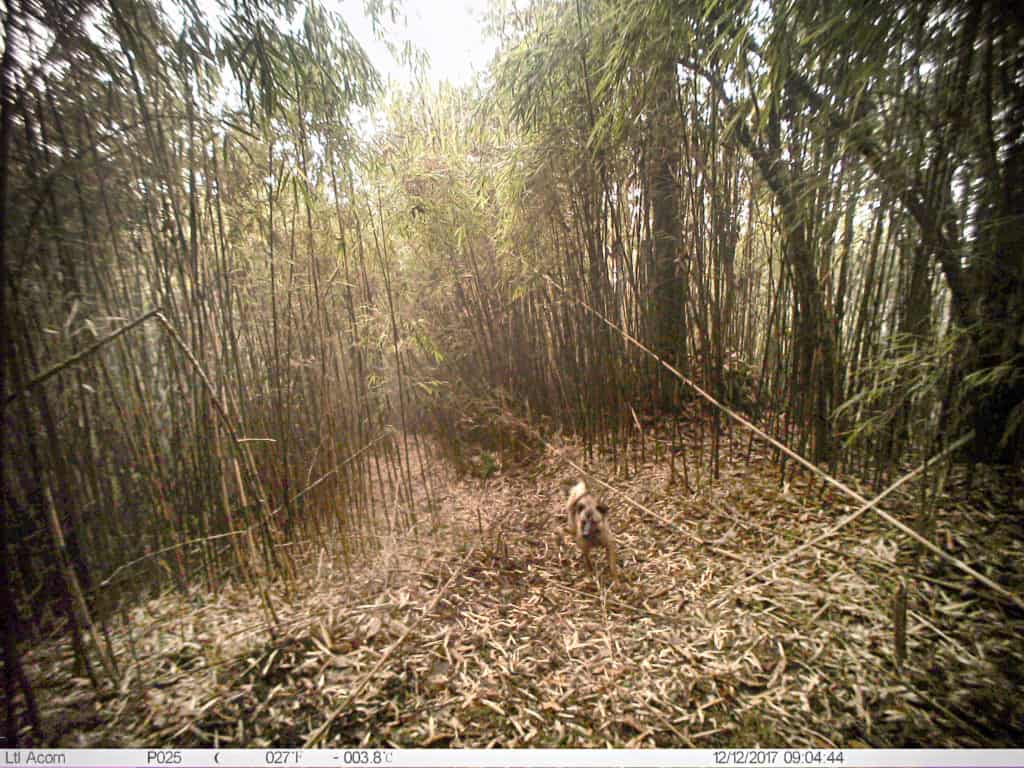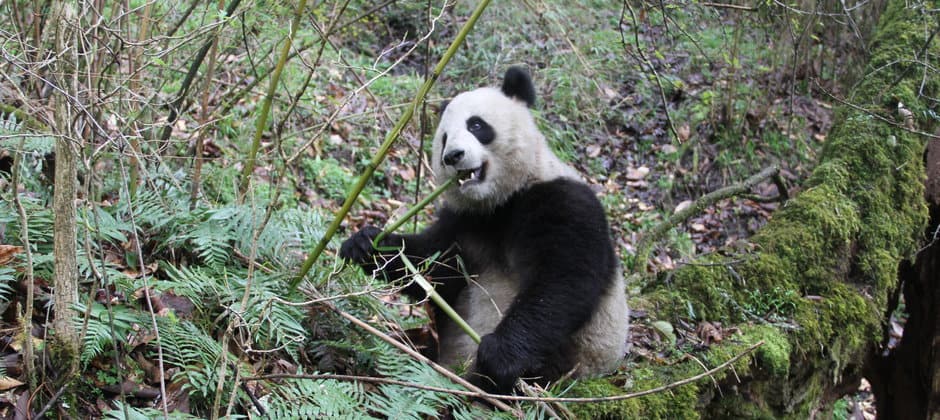Share this article
JWM: Domestic dogs may hamper panda recovery
Dogs living around a Chinese nature reserve where pandas are reintroduced can negatively affect the bears by attacking young pandas or introducing parasites and diseases.
Growing evidence shows that domestic dogs (Canis familiaris) may present a number of threats to giant pandas (Ailuropoda melanoleuca), whether it’s direct attacks or the transmission of parasites and disease.
“You’re trying to conserve pandas, and this is a really unmitigated and undiscussed threat that’s out there,” said Jake Owens, director of conservation at the Los Angeles Zoo & Botanical Gardens and one of the co-authors of a study published recently in the Journal of Wildlife Management.
Owens is an adviser for endangered species conservation at Chengdu Research Base of Giant Panda Breeding, which was developing a reintroduction program for captive-bred pandas in Liziping Nature Reserve.
Within a few months after biologists released two pandas in 2016, both were found seriously injured. While the young female was rescued, the young male died.
Owens and other researchers had often come across dogs during other research in the core panda habitats in Liziping — sometimes 6 miles into the reserve — and they thought that dogs may be the possible culprits in the panda attacks. They decided to examine this potential threat in more detail.

Dogs captured by camera traps within the Liziping Nature Reserve. ©Chengdu Research Base of Giant Panda Breeding
The relationship between dogs and pandas goes back to early research in this area of Szechuan. Biologist W.H. Sheldon’s 1937 article in the Journal of Mammalogy, “Notes on the Giant Panda” involved hunting pandas to serve as research specimens. To find them, Sheldon and his team made use of dogs that specialized in chasing the bears up trees or otherwise cornering them until the researchers caught up, Owens said.
Dogs still roam freely in many of the towns and villages surrounding the Liziping Nature Reserve. Plus, Owens said that dogs were certainly used in the area for hunting in the latter half of the 20th century. The dogs that are around now are likely descended, at least in part, from those panda-hunting canines.
“These dogs have a heritage of going out and hunting giant pandas,” he said.
His team conducted surveys, interviewing local villagers about whether they kept dogs, and whether their dogs entered the nature reserve. They documented 370 dogs in the area, and alarmingly, most were in the two villages closest to panda reintroduction sites. About 64% were free-roaming, they found, and even well-fed dogs ventured into the forest to forage. While these dogs are unlikely to directly kill an adult panda, Owens said they could go after younger bears.
“A pack working together could certainly go in and grab a cub from a panda mother,” he said.
The dogs could also cause negative secondary affects to pandas. The released panda that died, for example, succumbed to a sepsis infection, which could have resulted from a dog bite. But the dogs could also transmit parasites or diseases to the pandas. After taking blood and stool samples from some of the dogs in the area, the team found 4.7% carried canine distemper.

Dogs were found in many areas considered prime habitats for pandas in Liziping Nature Reserve. ©Jake Owens
“The threat is pretty substantial,” Owens said. “Giant pandas are really susceptible and have a high mortality rate from canine distemper.” His team also found evidence of past exposure to rabies, parasites and rotavirus, which is lethal to pandas.
In addition to direct threats, dogs may push pandas out of their preferred habitats. “There’s a bunch of ways that dogs could be contributing to decreased suitability,” he said.
While more research is needed on specific impacts, Owens said, his research has opened people’s eyes to the effects dogs may have on giant pandas.
“When we first started talking about this as a threat, people really didn’t believe us. They thought it was a ridiculous idea,” he said.
Now local and provincial governments are trying to control dogs in the area, and Owens has discussed with panda biologist in other provinces how to identify and mitigate this threat. Chengdu Research Base of Giant Panda Breeding is working with local government and village groups to educate locals on the possible risk about letting their dogs roam free in these important panda areas. Residents have been receptive, Owens said, because the pandas bring in tourists and create jobs and are seen as an important national symbol.
This article features research that was published in a TWS peer-reviewed journal. Individual online access to all TWS journal articles is a benefit of membership. Join TWS now to read the latest in wildlife research.
Header Image: A giant pandas preparing for release in a naturally forested enclosure in Liziping Nature Reserve. ©Jake Owens








